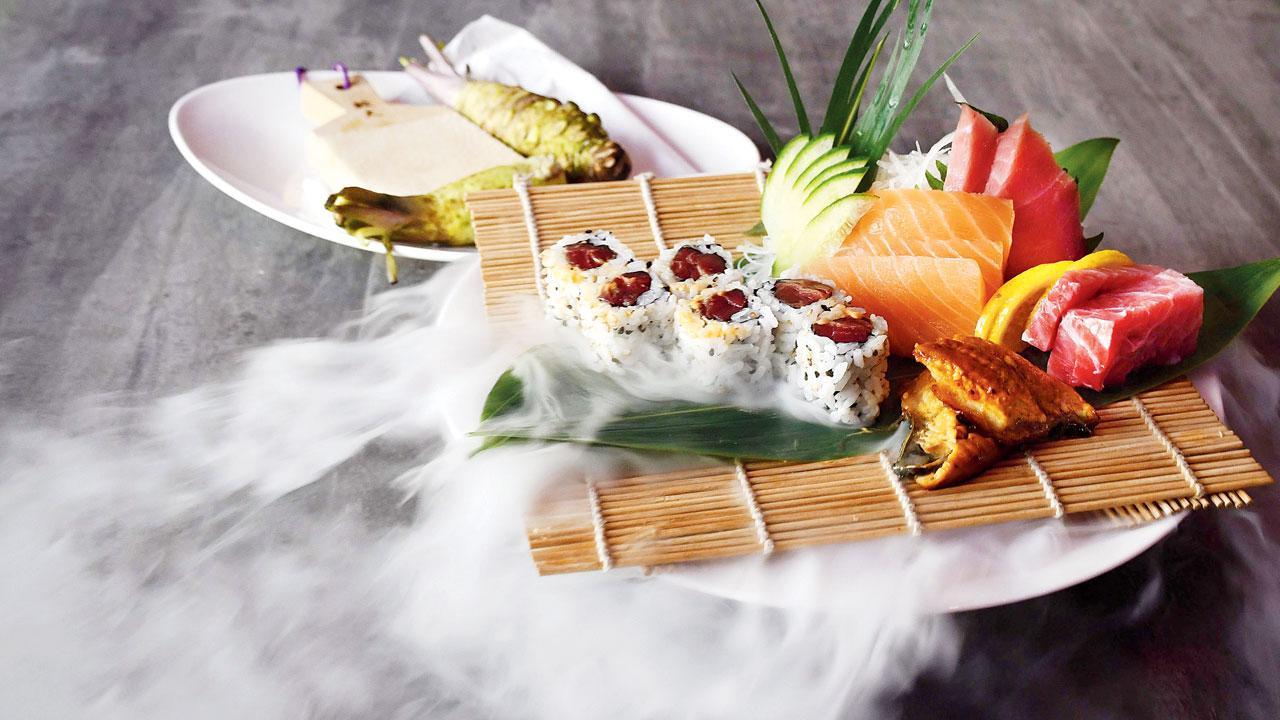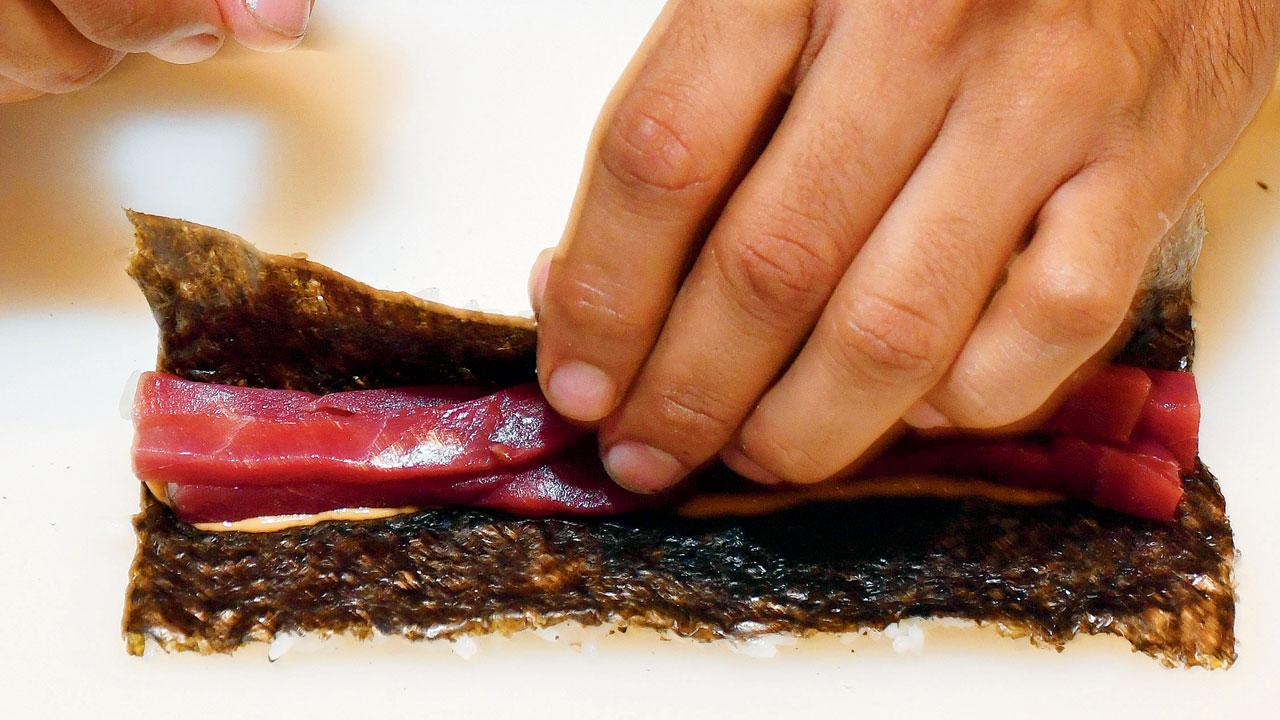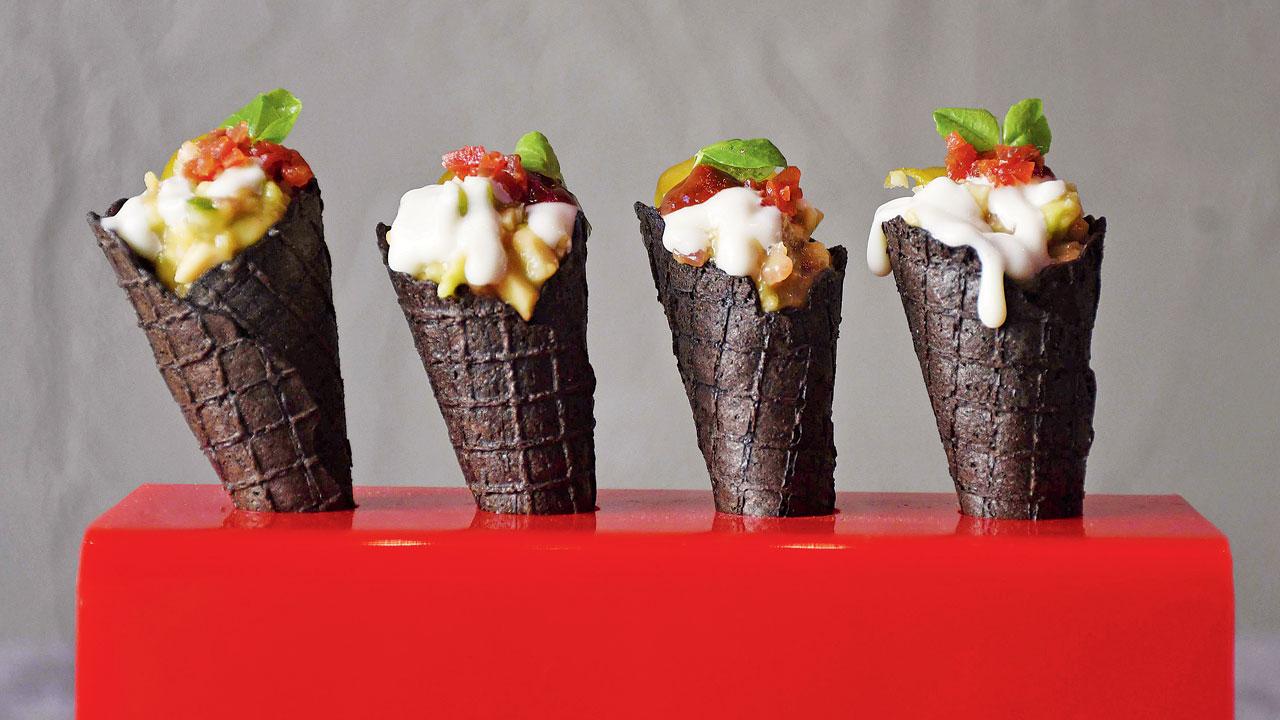After 15 years at Wasabi by Morimoto, chef Parvez Khan has launched a Japanese restaurant at Fort. He tells us why there couldn’t be a better time to go all out with the cuisine

Sushi and sashimi platter
Right out of cooking school, chef Parvez Khan joined the Taj Mahal Palace Mumbai as a hotel operations management trainee under chef Hemant Oberoi. For two years, he honed his skills in Lebanese, European and Chinese kitchens. One day, Oberoi, who was then corporate chef, told him he was assigned to a new kitchen. “I had no idea that they had hired me for Wasabi by Morimoto. I was chuffed. That’s why I always maintain that I didn’t choose the cuisine, the cuisine chose me,” says the 34-year-old chef, who was sent to Japan for training on many occasions and cook alongside renowned chef Masaharu Morimoto and his international team every once in a while. His journey of 15 years began as a chef de parte and he rose the ranks to become a sous chef, and finally landing the head chef position. Last month, he hung his chef coat at the iconic restaurant.
ADVERTISEMENT

Chef Parvez Khan has launched Wakai, a casual dining restaurant in Fort, with restaurateur Shardul Singh Bayas. Pic/Ashish Raje
On October 13, he launched Wakai, an upbeat, casual and cool restaurant in Fort with restaurateur Shardul Singh Bayas. “Ginza street in Tokyo is peppered with speakeasy format restaurants. You have to spot the door to enter, and once in, it is a different world altogether. I wanted to recreate that vibe in a premium format,” says Khan. As we look around, we see Japanese anime characters, a black cat with molten gold eyes staring at us. We look up and the ceiling is full of posters with Wakai written across the length in a fuchsia pink light installation. The mezzanine floor, which houses the sushi and spirit bar, is a mood. “Doesn’t it make you forget that you are sitting in Mumbai?” he asks us excitedly. We agree.
There was a time in India, around two decades ago, when people turned down even the idea of trying Japanese food, he remembers. Reasons ranged from there being nothing in it for vegetarians, to all the food is raw, bland and watery. That was then, and today, Japanese cuisine has acquired a cult following, and it goes beyond sushi. It has always stood apart as a big brother among Asian cuisines. Chinese, Korean, South East Asian and even Sri Lankan have flavours that are similar to Indian food. “They have the khatta, meetha, teekha in place,” Khan says, adding that Japanese flavours are more subtle. “We use limited flavours, including wasabi, yuzu and matcha and have to play around with it.”

Khan prepares the sashimi platter
Working with chef Morimoto, says Khan, was an experience. Known for his culinary genius and the exquisite design of both his food and restaurants, Morimoto began studying sushi in his hometown of Hiroshima after a shoulder injury ended a promising career as a baseball catcher in Japan. “I have imbibed two learnings from him—first, that everything has to be done at the right time, and second, if I want something done in a certain way, there are no two ways about it. There is a rule in my kitchen that no one serves something they are not happy with. I will personally apologise to the guest,” he says.
In 2004, the Taj Mahal Palace Mumbai launched Wasabi by Morimoto and this was the beginning of a change in perception. People came in droves to try it. In an earlier interview with mid-day, Morimoto had said: “Within the first three weeks, I had to change almost 50 per cent of it. They wanted vegetarian fare! All I knew about vegetarian cooking was temple food.”

Wasabi cornetto
While there will be no paneer on the menu, Khan explains that the global palate allows his food to reach a larger audience. “Japanese cuisine in India cannot be authentic. Traditionally, they are very particular about their food, and my menu fuses contemporary ideas with authentic flavours in grills, ramen, sushi and tempura.”
Khan has designed an Omakase menu, which literally means, “I leave it up to you”. It begins with Hassun, a tray of tidbits that are bite-sized tasters of dish that can be ordered as a full portion on the menu. The first one is sake olive with salmon, and mushroom and cheese gyoza. We love the tofu nanban, which comes with a house-made spicy negi sauce.
The next dish is innovative and delightful, and gives us a view of Khan’s contemporary vision board. The Wasabi cornetto comes to the table as four mini waffle cone servings. Filled with a wasabi cream, avocado and topped with a garnish of a spicy chyojan sauce, we’ll swap this savoury serve for real ice cream any day.
Next up, it’s time for the sashimi platter and maki sushi, which is also served without nori for patrons who don’t like the fishy taste of seaweed. One of the classic dishes on the menu is the black cod miso. The fish is frozen fresh and flown down from Japan. It is a four-day process, beginning with curing the fish for 24 hours, and marinating it for another day. We try the cod with egg toban fried rice.
We learn a new trick to check the fish. Run the convex side of your spoon on the skin and it should flake. It does, and the fish melts—hints of umami miso burst on the palate. For dessert, it is kokonattsu tortino, a classic Italian rendition of cake with a lava centre. This version is a coconut cake, with a citrus sauce oozing from the centre. The dollop of creamy tender coconut ice cream sitting atop and kiwi and berries on the side, best define what Khan is attempting with the menu. An authentic Japanese food tour in contemporary style. The name Wakai is apt, for it’s a fresh outlook to a cuisine that has taken its own sweet time to woo the Indian foodie.
Cult following
Japan, overall, has intrigued Indians. From its culture, philosophies and food offerings, beginning with sushi. We have fans of anime as well as Ikigai today, and palates crave the fare that goes beyond sushi. While Mumbai lapped up the flavours at standalone restaurant Izumi, the cuisine has reached people through pan-Asian menus crafted by Koko, Foo and Hakkasan.

Japanese cuisine wore the air of being expensive, but sushi QSRs broke that myth. The name behind this is Harry Hakuei Kosato, who came to India for a friend’s wedding in 1995. When he shared the idea to introduce a sushi brand, the first reaction he got was that it wasn’t a good idea. “People would say, ‘Is it even possible for vegetarians? Indian palates and sushi won’t work.’ They told me not to waste my time in India. In 2007, he moved to India to set up his idea. In 2011, he started Sushi and More, facing initial glitches of erratic ingredient supply and a high staff turnover. Then to now, sushi is like the trendiest food in India,” Kosato shares.
Last year, he helped bring Kikkoman Corporation to India which makes a naturally brewed soy sauce. From salmon to prawn and avocado, the stable supply of essential ingredients is key to a QSR business. “Today, we recommend our soy sauce in Indian cooking and it has been a great response. This shows that the cuisine is ingrained in India and like Chinese, it will be inculcated as a local international cuisine.”
 Subscribe today by clicking the link and stay updated with the latest news!" Click here!
Subscribe today by clicking the link and stay updated with the latest news!" Click here!







